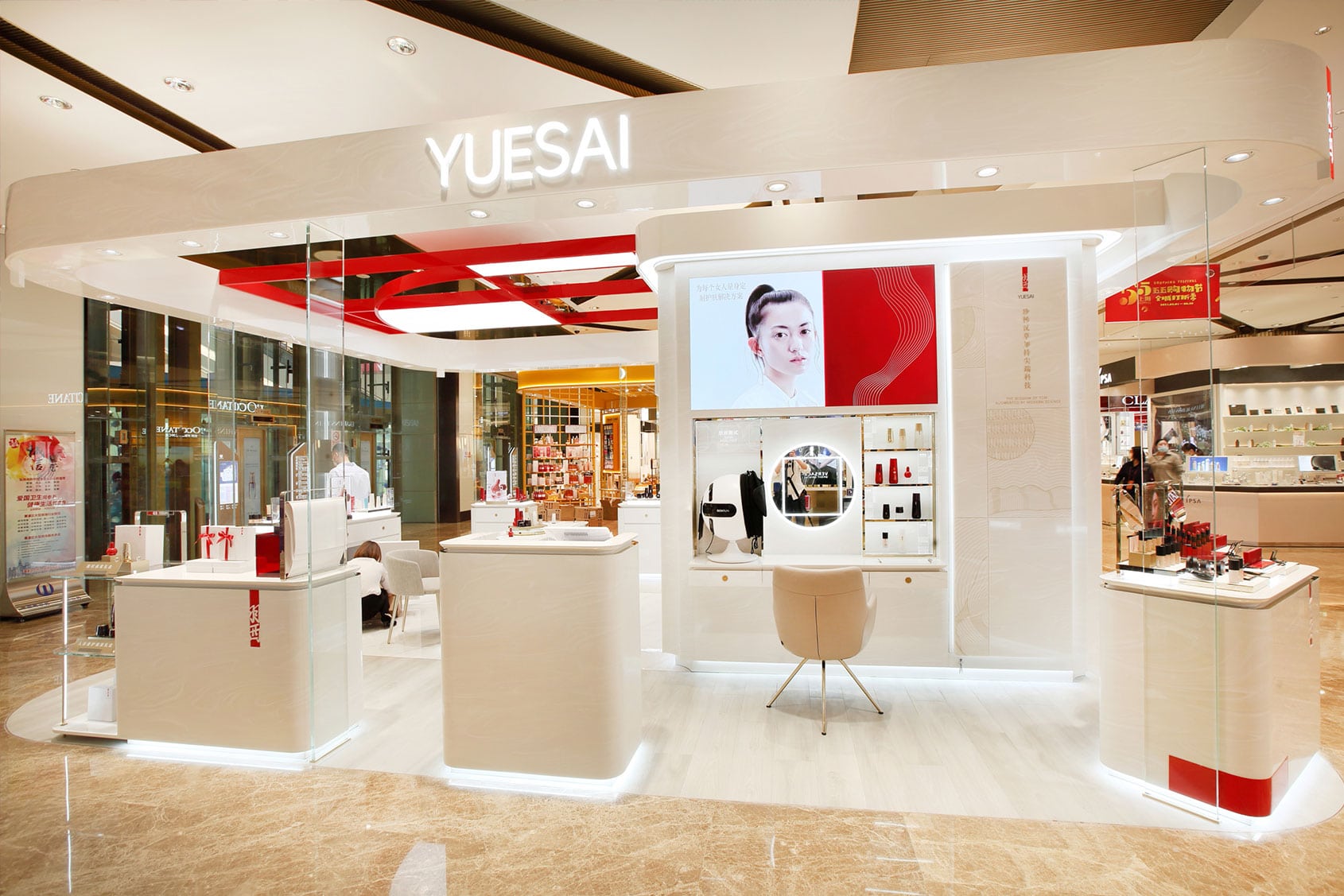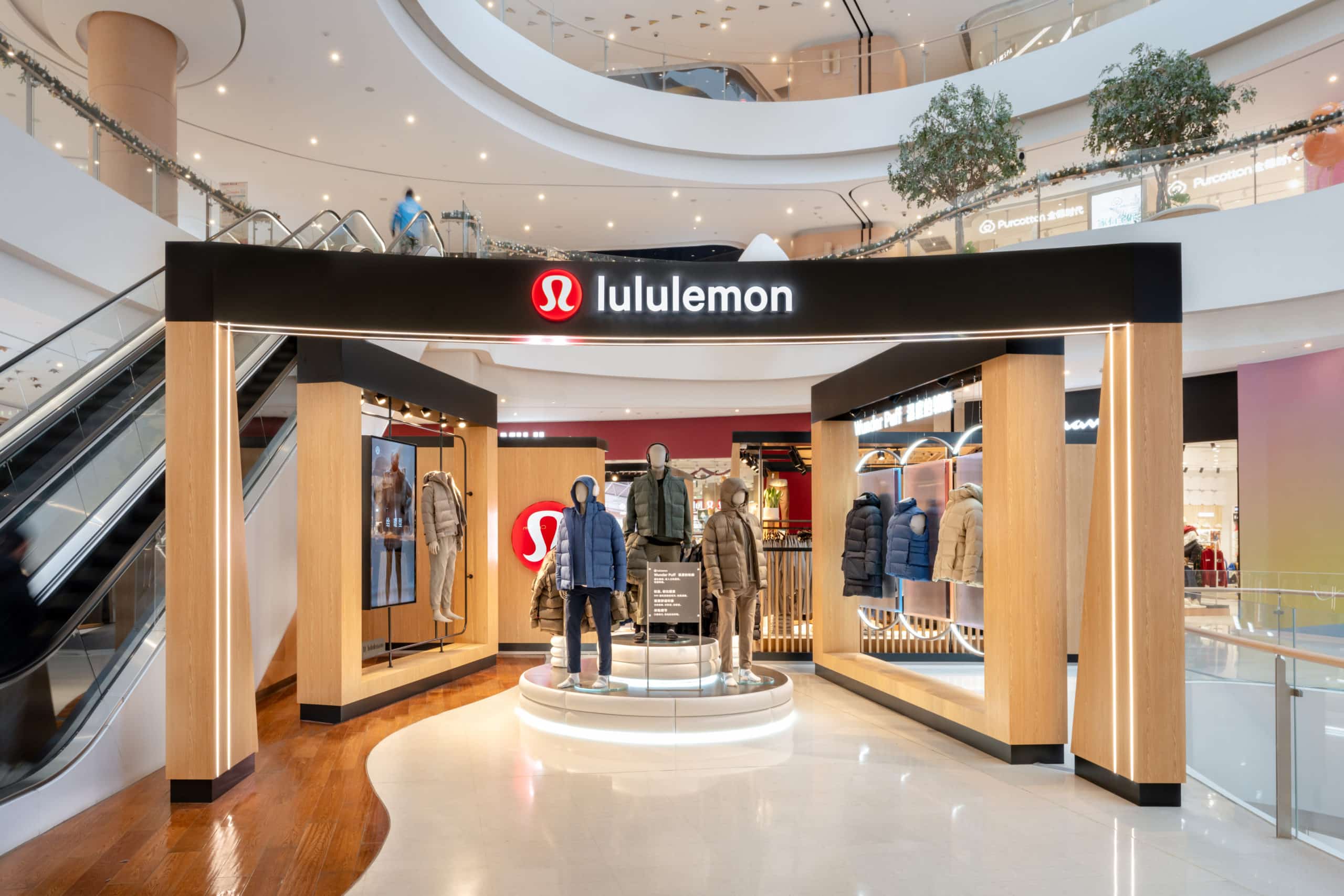Many of the tech pioneers who manifested social media are Gen X geniuses. However, Gen Z is the generation that’s truly grown up in a fully digital landscape. Content and algorithms shape their perceptions and responses to the interplay of offline and online worlds.
With fast-moving retail markets in China, businesses operating within these unique environments need direction, along with momentum to engage. They need to first understand their audience. Check out our feature on 6 Insights About Chinese Gen Z Consumers that Retail Brands Need to Know.
Chief Creative Officer at The Orangeblowfish, Siu Tang might not be Gen Z, although he has been known to pitch to clients wearing costume bunny ears. What he is though, is a branding expert with a deep-level understanding of what motivates, activates, and ultimately resonates with this age-specific community of consumers.

Creating branding gold is The Orangeblowfish Chief Creative Officer, Siu Tang (not forgetting his iconic bunny ears)
Here, he digs into the rabbit hole (pun intended), of how retail brands in China can engage Gen Z through creativity.
Understand the Gen Z culture of shared online communities beyond China
Creative ideas come from delving into what connects Gen Z in unique ways.
Due to social media and the world’s general connectivity, there’s more commonality shared across multiple continents. Everyone is looking at the same kind of content because it’s aggregated across different sites.
Compared to a few years ago, content today is more frequently repurposed, repackaged, and reposted. This means that a TikTok post viewed outside China can easily find its way onto YouTube Shorts, WeChat Moments, and Douyin.
Not only is this connection across time zones, but also age groups. Video content promises to extend brand reach to Gen Z and these consumers are lapping it up. Content that sticks in the US and Europe, for example, is being grabbed by the bucketload and viewed and shared more freely in China now, too.
Gen Z shares retail experiences inspired by them
A shared media network impacts the retail industry.
Gen Zers in China can share retail and brand experiences globally. This also affects consumer expectations. There’s real scope for international retail brands setting their sights on China to engage creatively with Gen Z retail consumers.
A better understanding of the local market must include how it fits into this wider digitally created arena. One of the blocks to plugging into Gen Z in China, can be brands being too tightly controlled from outside of China. This can work well for super high-profile brands; however, it can lead to less freedom of expression creatively. Brands need to be inspired by these more sophisticated localised markets and how their profile fits on a micro and macro level.
Connect to Gen Z with immersive offline experiences
Brands need to lean into offline experiences to creatively engage with them.
While Gen Z might gravitate toward shopping online, these consumers want creative, experiential retail destinations and events in physical spaces that capture their attention. Even if they then go on to purchase online. Creating experiential branding, with a creative agency partner, reflects an ever-evolving business model and capitalises on sales channels that are changing, too.
Some brands might lead a creative campaign that does not include products for sale or perhaps encompasses a minimal sales presence.
Our Arc’teryx ReBird: A Forest in the Heart of the City campaign is a great example. Pieces of the brand’s outdoor apparel collection were showcased in glass pillars that were illuminated motion sensors. These represented trees and were discovered within a black box pop-up branded art installation designed as an urban jungle. Visitors stepped into textured, trail-like flooring with lighting and architectural designs to mimic sunlight filtering through a tree canopy. The brand journey was fully immersive, leading to a small ‘clearing’ with products that could be purchased.

‘Sunlight’ glints through the ’canopy’ of motion-sensor illuminated ’trees’, revealing an Arc’teryx collection in an immersive forest installation
Our YUESAI Cosmetics campaign was designed to enhance the retail experience at its open-plan concession stand within the renowned New World mall in Shanghai. The Chinese-born brand, which has long since been acquired by L’Oréal, is made with Traditional Chinese Medicine (TCM) ingredients to appeal to Asian consumers. The redesign incorporated digital elements and environmental graphic design, as well as interior design, packaging, signage, and wall art. The focus was on connecting with customers from afar, at the perimeter of the display, and up close.

Traditional wellbeing concepts interpreted with modern touchpoints and a cool, contemporary aesthetic at YUESAI Cosmetics
Hero red highlights and a video screen drew attention, with a modern Chinese medicine cabinet in white representing wellness and purity. Sensor touch pads on counters within the customer experience area enabled shoppers to have seamless tech interaction with product information on contact. This enhanced beauty advisors to provide personalised consultations. Abstract TCM design played out through this area, flowing onto the gift-wrapping graphics. The impression was one of inner beauty that’s elegant and feels luxuriously light.
Impressed Gen Z consumers generate interest
Peer reviews ae essential for brands to creatively attract.
Creating bold visuals and sensory experiences entices Gen Z in China to take photos and videos; sharing these on social media. Brand spaces might include pop-up events, installations, and AR activities. By sharing retail-related experiences, consumers become content generators and influencers in their own right.
The concept of experiential branding has long been established in F&B, with many restaurant designs relating to storytelling. Sometimes, the history of a place or building inspires the narrative. China’s Gen Zers are always on the lookout for destination retail experiences that are increasingly more interesting and creative. They want to feel special and entertained.
Be authentic to craft unique creative campaigns
Copying others weakens brand messaging.
The Gen Z market in China is eager to try new brands and they are more experimental than other generations. They are less fixed on legacy brands, but still value quality. As a result, there are a lot of opportunities in China and there’s no retail market dominance from a few brands.
The key to inspiring brand loyalty within China’s free-for-all environment is to nurture authenticity; staying true to what a brand represents and its story.
This is where a creative agency can decipher these brand message strands and envision a nuanced approach that lets a branding narrative unfold in a creative way that feels real; true to brand values and how it’s perceived by Gen Z consumers. Creativity begins with authenticity and crafts originality, enabling Gen Z to boldly interact with brands. The antithesis of this is jumping on the bandwagon.
Copying others may bring a certain level of popularity, but this can sometimes be at the expense of the overall brand message which is then diluted. The reason some of the legacy brands have survived, and continue to do so, is that they block out the white noise of what everyone else is doing and never lose sight of their brand messaging. Consumers give them kudos for this.
Create a relevant reason to visit
Engagement gets consumers through the shop door.
Shopping malls have always had anchor retailers and flagship stores to get people through the doors. However, in China there is such a saturation of these retail hubs that there’s less of an incentive, unless a centre happens to be on your doorstep.
Retailers are faced with a challenge: How do they engage with Gen Z and give them a reason to visit (RTV) a particular pop-up and then a specific store in a certain mall? The answer is to create experiential storylines that extend to physical stores and that are relevant enough to give Gen Z consumers a reason to visit. This might be a call to action such as a gift card, that leads from a brand experience in a shopping mall atrium to a store on another floor.
Retail experiences are about how consumers are feeling; inspired by what they can see and touch. Creativity can be used to manifest interactivity and community.
Athletic apparel brand, focused on yoga, running, and training, lululemon, whom The Orangeblowfish has worked with in China, is a great example of a retail brand that’s created a community spirit within a store environment. The staff are relatable to consumers because they are also the target market. They run workshops with a kitchen party table where people can gather. This gives consumers a reason to visit. Brands need to localise ideas, stories, and content. These need to be interesting and engaging. Each brand needs to reveal an individual voice and one that is worth listening to for Gen Z.

lululemon’s first pop-up store for men in China at Shanghai’s The HUB embraces a modular design that is flexible and engaging in its clever simplicity
Following the pandemic, people in general, and certainly youthful Gen Z wanted to go out again and connect physically. Digital platforms are expanding to such an extent that some have become more like outdoor spaces, such as the Metaverse. However, retail hubs have fast become third places to hang out beyond home and work. This works to the advantage of brands, with a retail destination that’s also about lifestyle, entertainment, and culture, as well as community, leisure, and interactivity.
Refresh legacy brands through a creative lens
Creating new stories ties Gen Z into an evolving brand heritage.
Legacy retail brands are often imprinted, with the help of sophisticated and creative campaigns, into consumer minds. In the past, nobody questioned their gravitas in terms of worth and quality. They stood above other names, in their own space of time.
These well-known brands also have to find new and creative ways to engage with Gen Z in China. The way to lock into creativity is for these brands to be open to retelling their story, within their own parameters yet with a more Gen Z-friendly approach.
In China, Gen Z retail consumers don’t always know about, let alone appreciate, the history of ingrained brands. A 100-year-old heritage brand might not mean a whole lot to a 20-year-old Gen Z retail consumer. The creativity can come from linking up with renowned Gen Zers.
Cartier celebrated the centenary of its Trinity Collection in 2024. To make this resonate with younger consumers, they worked with K-Pop idol and fashion brand creator Jackson Wang. It’s not enough to rely on legacy, high-end brands often need to refresh and create new experiences.
Leading legacy brands look to Gen Z-friendly influencers
Collaborations reach beyond heritage into the future.
Some established brands are big enough to lead the way by creating their own trend, rather than following. In other words, they continue doing what they always have without pandering to Gen Z sensibilities. However, even these highly successful names often work with tastemakers who are in touch with certain consumer communities. This means brands can connect to consumers via an influential person who knows what consumers want and can take a creative lead.
A good example is the late American fashion designer and entrepreneur, Virgil Abloh who was the creative director at Louis Vuitton menswear. He kept up with his own brand, Off-White which was hugely successful in China, while collaborating with the luxury brand. What this does is give brands a connection with Gen Z by proxy.
Singer Pharrell Williams and hip-hop star Tyler the Creator are other examples. They are popular in the music scene and aware of what Gen Zers are into. They can bring on-the-ground knowledge to brands and creative campaigns; ensuring longevity.
Summary
Insights about Gen Z ensure creative ideas blossom if they are planted in the right conditions. Campaigns capture this high-expectation market by creating a design language and brand storytelling experience that resonates with individuals.
The marketing philosophy that drives these cohesive concepts has to be anchored in authenticity and a true understanding of Gen Z consumer behaviour insights.
Crafting offline ideas is about having an in-depth vision of how to enhance the consumer reason-to-visit and how this interacts with retail environments, consumer mindset, and brand relationships.

